
Understanding Cannabis Topicals And How They Work
Cannabis topicals are taking the cosmetics world by storm. However, using weed creams can be daunting for those unfamiliar with cannabis and how it works. Read on to get up to speed on the specifics.
Topicals are among the hottest new cannabis products. Lotions, balms, oils, and transdermal patches are just some of the topical products that can be enriched with cannabis to deliver cannabinoids, terpenes, and other beneficial plant compounds directly to receptors in the skin.
Keep reading for a detailed look at cannabis topicals, how they work, and the potential benefits they provide.
What Are Cannabis Topicals?
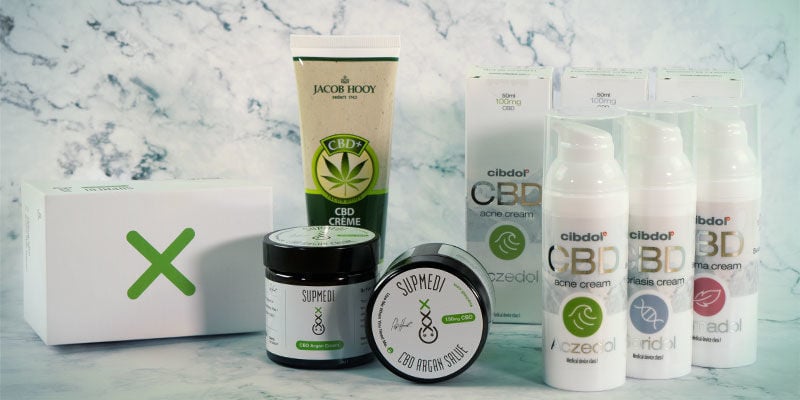
“Topicals” is an umbrella term used to refer to any cannabis product designed for external use on the skin. Whereas smoking, vaping, or ingesting cannabis delivers cannabinoids and other cannabis compounds into the bloodstream, topicals don’t (except transdermal patches, which we’ll look at in the next section of this article).
Instead, cannabis topicals work by delivering their active compounds directly to receptors in the skin, without crossing into the bloodstream.
What Are Transdermal Cannabis Patches?
Transdermal patches, as the name suggests, are topically worn patches that deliver small doses of cannabis compounds past the epidermis and dermis and into the bloodstream for extended periods of time.
While they might sound advanced, transdermal patches have been around for some time. Nicotine patches, for example, work by delivering small amounts of nicotine into the blood over extended periods of time to help people quit smoking.
Does Topical Cannabis Really Work?
If you’re reading this, you’re probably familiar with the endocannabinoid system. In case you’re not, the endocannabinoid system (ECS) is a biological system that all humans and most vertebrates have. Over the last 10 years, more and more research has gone into trying to understand the endocannabinoid system and its role in the body.
While this is still an area under active investigation, research to date suggests that the ECS plays a crucial role in mediating many different physiological processes. In fact, some researchers have even gone so far as to call the ECS the body’s “universal regulator”.
While there’s still a lot we don’t know about this system and the role it plays, research has shown that the endocannabinoid system is present all throughout the body, including the skin, where it might play an active role in mediating cell proliferation, growth, and differentiation, as well as hormone production, inflammation, and much more.
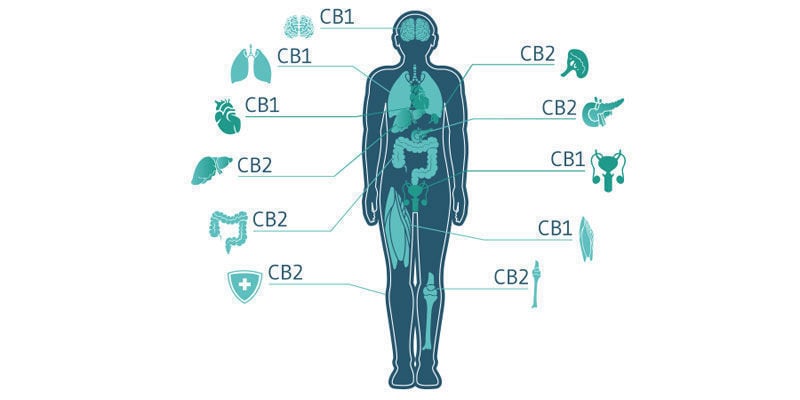
Since the receptors that help compose the endocannabinoid system are present in the skin, using cannabis topicals could potentially deliver cannabinoids and terpenes to these receptors.
Some research has already begun trying to uncover the role of the endocannabinoid system in managing skin health. One study, published in the Journal of Dermatological Science, for example, tested the effectiveness of cannabinoids in reducing skin cell hyperproliferation (which can cause red, itchy, and scaly skin).
Other studies have also looked at the effects of cannabinoids on sebum production (an oily, waxy substance produced by the body’s sebaceous glands). Overproduction of sebum is one of the principal causes of skin blemishes.
Because the skin is home to receptors capable of interacting with compounds naturally found in cannabis, using cannabis topicals may be an effective way to facilitate this interaction. As such, using cannabis creams, lotions, oils, and other topicals could present some of the following benefits:
- Reduce redness, dryness, and itching
- Promote healthy skin cell proliferation
- Control sebum production
Will Cannabis Topicals Get You High?
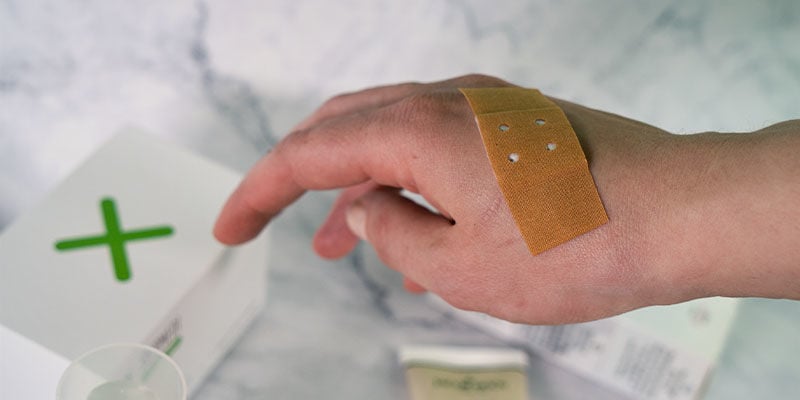
This is a very common concern for people curious to try cannabis topicals. The answer, however, is no. Using cannabis topicals won’t get you high because, even if a product contains THC (the intoxicating ingredient in cannabis), it isn't capable of delivering such compounds into the bloodstream.
Transdermal patches, on the other hand, do deliver these compounds into the bloodstream, and may therefore get you high if they contain THC. Transdermal patches without THC, however, will not produce the effects we associate with a typical cannabis high.
Can Topical Cannabis Cause You To Fail a Drug Test?
No, using cannabis topicals shouldn’t cause you to fail a drug test. Again, this is due to the fact that these products do not deliver cannabis compounds into the blood.
If you’re using THC-free transdermal patches, you should also have no problem passing a drug test. Full-spectrum CBD patches may contain trace amounts of THC, but this shouldn’t be enough to set off a common workplace drug test. Patches containing THC, however, can and will cause you to test positive for cannabis on a drug test.
THC Topicals vs CBD Creams
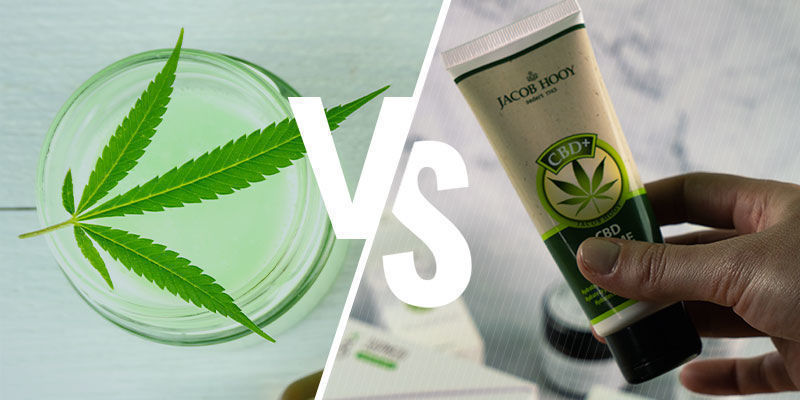
The main difference between THC topicals and CBD creams is their chemical composition. Most CBD creams are made using extracts derived from non-intoxicating hemp (or cannabis strains specifically bred to contain negligible levels of THC). These products are usually the easiest to access for most people, seeing as CBD is legal in many parts of the world.
THC topicals, you guessed it, contain THC, and are usually made from extracts derived from THC-rich cannabis (the same stuff you’d smoke to get high). Because THC is still illegal in most parts of the world, these products are much harder to access than topical CBD for most people.
Because they contain different cannabis compounds, both THC topicals and CBD creams interact with the endocannabinoid system a bit differently.
THC is structurally very similar to anandamide, an endocannabinoid our body produces naturally. Therefore, it can naturally bind to anandamide’s receptors, known as CB1 receptors. To understand this process a little better, it can help to think of THC and anandamide as two different keys that both fit into the same lock (or receptor).
CBD and the other cannabinoids present in CBD creams, on the other hand, don’t fit into cannabinoid receptors in the same way as THC. Instead, these compounds are believed to interact with the endocannabinoid system in a more indirect manner. Moreover, they are believed to stimulate various other molecular targets.
How To Use Cannabis Cream
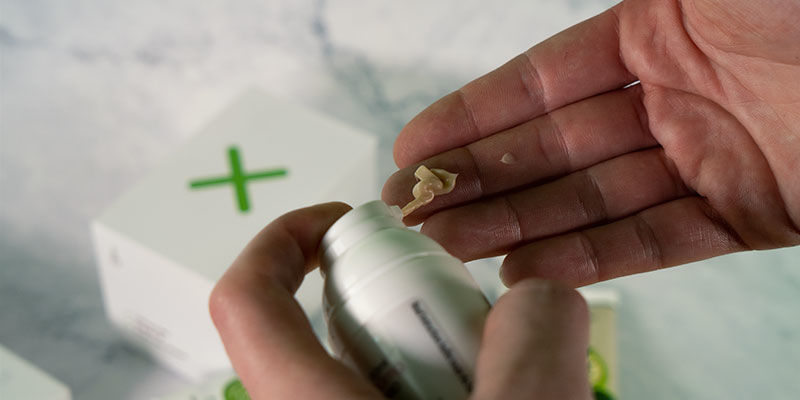
Using cannabis creams and topicals is simple. First, apply a small, pea-sized amount of topical on one area of your skin just to test your sensitivity to it. Once you’re confident that the product isn’t causing any irritation, go ahead and use it according to the instructions/guidelines that came with it.
The rest is up to you and the effects you’re looking to get from your product. People using cannabis creams to relieve muscle soreness after a workout, for example, use the creams after the gym on an as-needed basis.
Making Your Own Cannabis Topicals
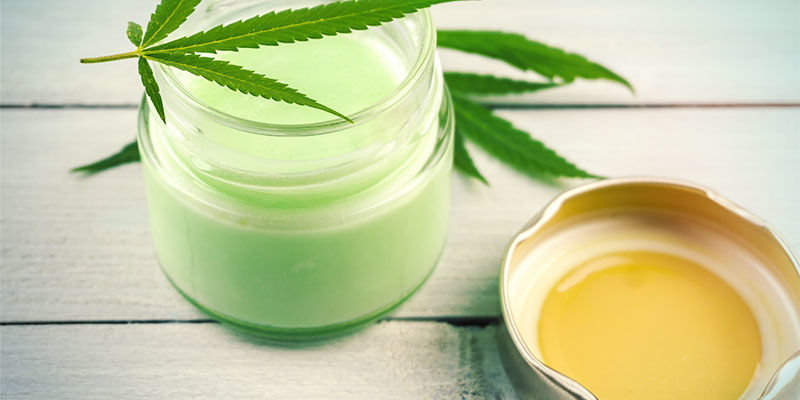
Cannabis topicals are becoming increasingly popular, so you’ll likely have a lot of options to choose from, either from online retailers or health and wellness/cosmetics stores in your area.
If you’re struggling to find store-bought cannabis creams, however, you can try making your own with virtually any cannabis strain.
Cannabis creams offer a great way to reap the benefits of the cannabis plant, without having to smoke or vaporize flower/concentrates or ingest edibles. Because they do not enter the bloodstream, topicals are also a superb option for people looking to try cannabis, who don’t want to get high or risk failing a drug test.
Make sure to check out our CBDshop for a range of topical products, or get informed on how to make your own!
- (2007/02/01). Cannabinoids inhibit human keratinocyte proliferation through a non-CB1/CB2 mechanism and have a potential therapeutic value in the treatment of psoriasis - ScienceDirect - https://www.sciencedirect.com
- Attila Oláh, Balázs I. Tóth, István Borbíró, Koji Sugawara, Attila G. Szöllõsi, Gabriella Czifra, Balázs Pál, Lídia Ambrus, Jennifer Kloepper, Emanuela Camera, Matteo Ludovici, Mauro Picardo, Thomas Voets, Christos C. Zouboulis, Ralf Paus, & Tamás Bíró. (2014/09/09). Cannabidiol exerts sebostatic and antiinflammatory effects on human sebocytes - https://www.ncbi.nlm.nih.gov
- Chad A. Sallaberry, & Laurie Astern. (2018/06/01). The Endocannabinoid System, Our Universal Regulator - https://www.jyi.org
- Tamás Bíró, Balázs I. Tóth, György Haskó, Ralf Paus, & Pál Pacher. (2009, August). The endocannabinoid system of the skin in health and disease: novel perspectives and therapeutic opportunities - https://www.ncbi.nlm.nih.gov









 United States
United States














